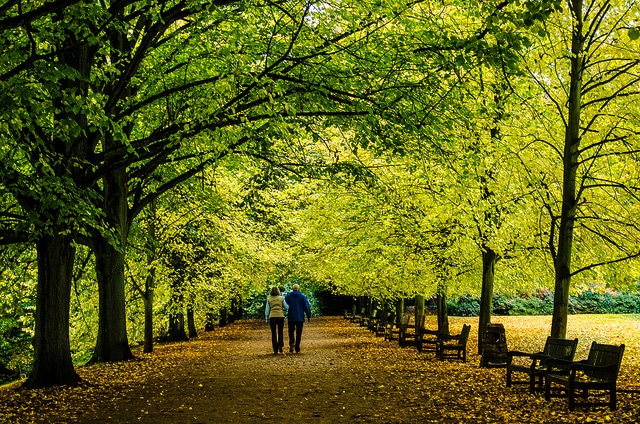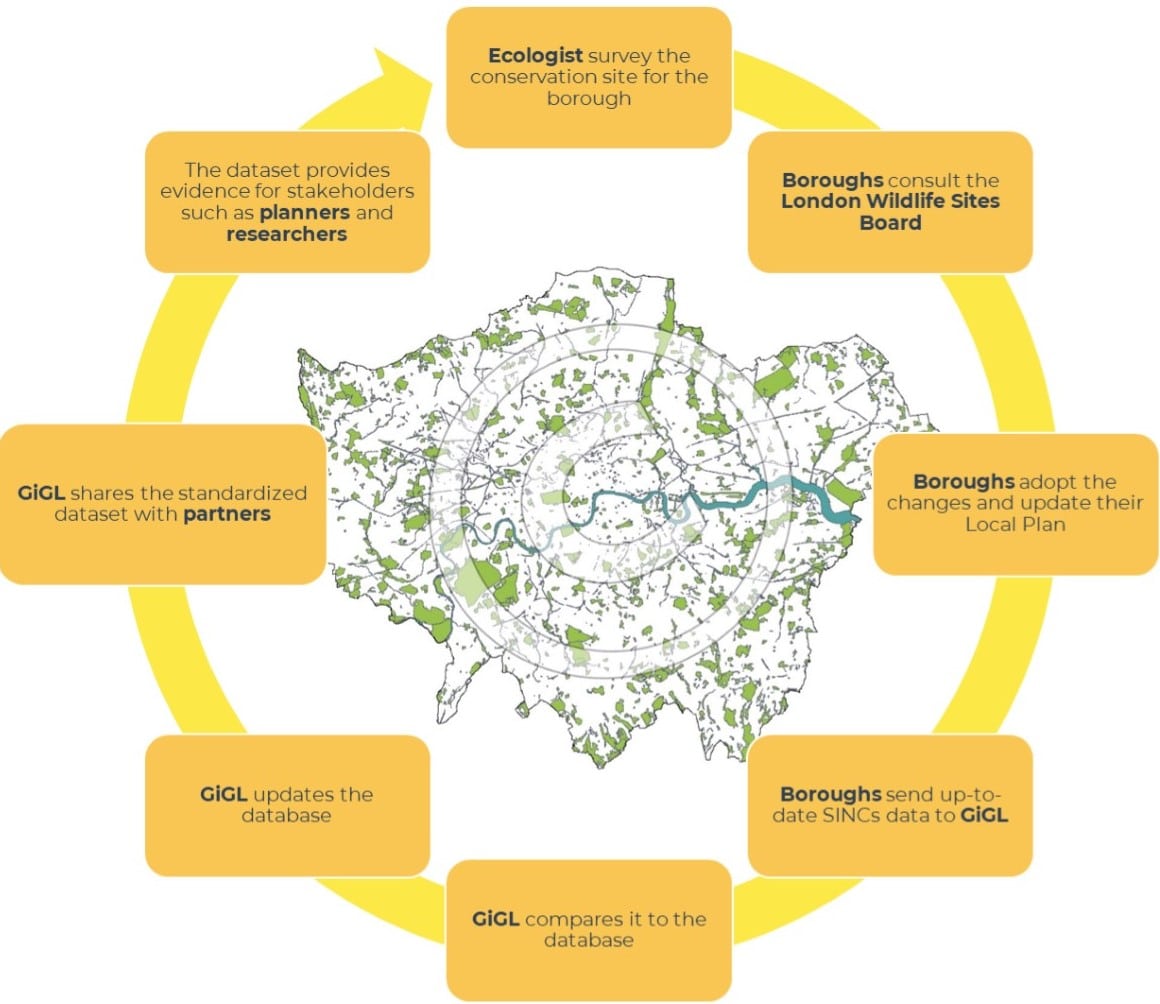Laura Kuurne, GiGL Database Officer
Laura delivers work to review, develop and maintain GiGL’s datasets of the capital’s Sites of Importance for Nature Conservation (SINCs) and their citations, open spaces, and habitats. This includes working with the GiGL team and external advisors to advance these datasets and ensure a robust evidence base for partners and stakeholders.
In a rapidly growing city such as London, it is increasingly important to identify, enhance and protect areas that support habitats for wildlife. As well as having socioeconomic benefits, access to wildlife-rich environments have been found to improve people’s happiness and health.

Walking through Hampstead heath © Garry Knight
Helping protect such areas are Sites of Importance for Nature Conservation (SINCs) – non-statutory designated sites that are recognised for the important habitats they support. Due to the habitat survey programme that ran from the mid-1980s to 2009, and ongoing reviews conducted by local boroughs, there are now over 1600 SINCs that form a comprehensive network of wildlife sites, protecting urban biodiversity and providing a valuable opportunity for people in the city to connect with nature.
Protection and management of these sites are a collaborative effort between experts from multiple sectors including ecologists, borough planning officers and data specialists, such as GiGL.
The Process
The sites are first identified by professional ecologists, who assess the habitats and give their recommendations to the local boroughs for further consideration. Then with the help and advice from the London Wildlife Sites Board (LWSB), the boroughs decide if the sites qualify as SINCs by using the criteria set in the London Environmental Strategy (LES) and the LWSB Advice Note; boroughs are responsible for designating the sites but rely on the advice from LWSB, particularly when altering the designations for sites of higher value such as those of Metropolitan and Borough importance. When any changes to SINCs are confirmed, local boroughs adopt them into their Local Plan and send the data to GiGL, as recommended by the LWSB.

The SINCs update process and map of all SINCs in Greater London (centre) ©Greenspace information for Greater London CIC (Based upon the Ordnance Survey © Crown Copyright and database right 2019. OS 100032216. GLA)
The city and its environment change over time and so do SINCs; new SINCs may be established or some may be lost due to inevitable development or lack of appropriate site management. Although SINCs are not legally protected, they must be considered in any land use planning decisions (LES, p.446). Therefore it is essential to keep this collection of data up-to-date, as it protects these valuable sites through the borough planning policies. GiGL manage the London SINCs database on behalf of the Greater London Authority (GLA) and therefore has a key role in ensuring there is a robust evidence base to guide planning decisions and inform conservation action and research.
Ultimately though, the protection of SINCs relies on the data flow; how information is passed sequentially from the ecologists, to the boroughs, and to GiGL. The importance of collecting, managing and sharing natural environment data resonates with the London Environment Strategy where the Mayor of London expects all London boroughs to participate in a data exchange agreement with GiGL (LES, p.190).
We hope to develop greater communication with the boroughs to ensure the data that enter our database are accurate, consistent and reliable – the consideration of SINCs and the City in land use planning decisions depends on it…
